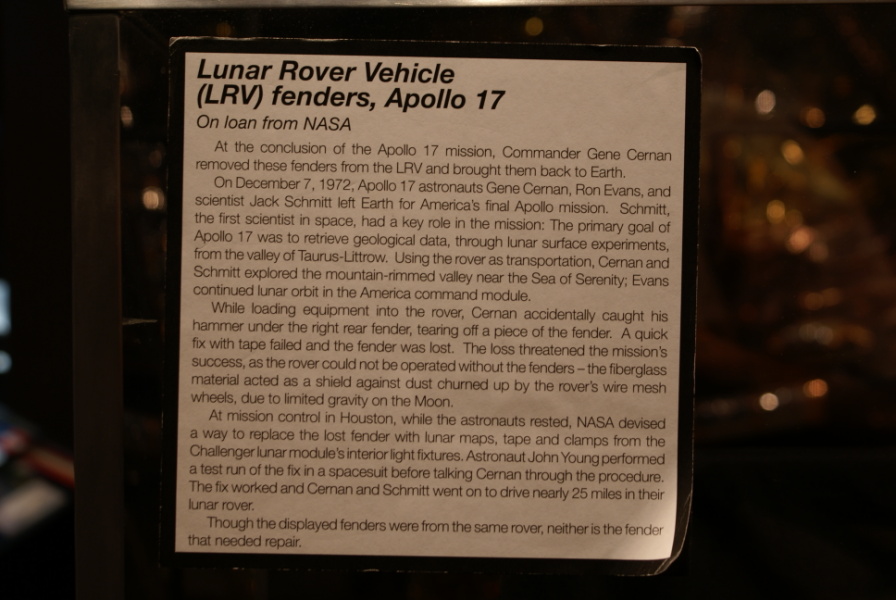| Prev |
heroicrelics.org Kansas Cosmosphere Site Index Apollo 17 LRV Fenders Gallery |
Next |
dsc45605.jpg
The sign accompanying the LRV fender segments in 2008.
It reads
Lunar Rover Vehicle
(LRV) fenders, Apollo 17On loan from NASA
At the conclusion of the Apollo 17 mission, Commander Gene Cernan removed these fenders from the LRV and brought them back to Earth.
On December 7, 1972, Apollo 17 astronauts Gene Cernan, Ron Evans, and scientist Jack Schmitt left Earth for America's final Apollo mission. Schmitt, the first scientist in space, had a key role in the mission: The primary goal of Apollo 17 was to retrieve geological data, through lunar surface experiments, from the valley of Taurus-Littrow. Using the rover as transportation, Cernan and Schmitt explored the mountain-rimmed valley near the Sea of Serenity; Evans continued lunar orbit in the America command module.
While loading equipment into the rover, Cernan accidentally caught his hammer under the right rear fender, tearing off a piece of the fender. A quick fix with tape failed and the fender was lost. The loss threatened the mission's success, as the rover could not be operated without the fenders - the fiberglass material acted as a shield against dust churned up by the rover's wire mesh wheels, due to limited gravity on the Moon.
At mission control in Houston, while the astronauts rested, NASA devised a way to replace the lost fender with lunar maps, tape, and clamps from the Challenger Lunar Module's interior light fixtures. Astronaut John Young performed a test run of the fix in a spacesuit before talking Cernan through the procedure. The fix worked and Cernan and Schmitt went on to drive nearly 25 miles in their lunar rover.
The the displayed fenders were from the same rover, neither is the fender that needed repair.

| Time picture taken | Tue Jul 29 17:11:08 2008 |
| Location picture taken |
Lunar Exploration Gallery Hall of Space Kansas Cosmosphere Hutchinson, KS |
| Prev |
heroicrelics.org Kansas Cosmosphere Site Index Apollo 17 LRV Fenders Gallery |
Next |